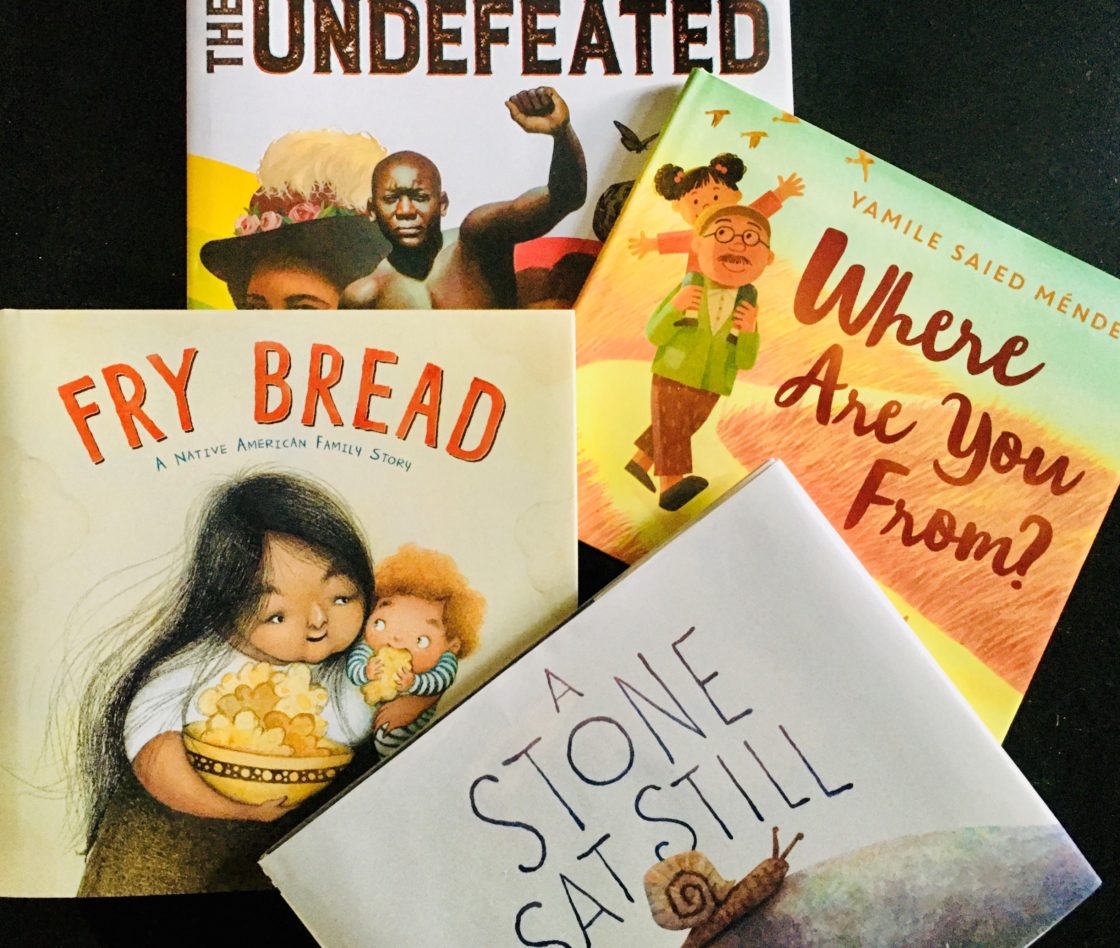Michele: I feel like with both of us being at new schools this year, it has been hard to sit down and to talk books. I know for me, moving from K-1 to PreK-8 has filled much of my once free time with learning new standards and MANY more lesson plans. On the other hand, it has given me the excuse to look at the best in youth literature for a much wider age group than in the past. The landscape has changed so much, even for grades two to five, especially in regards to diverse books from four years ago when I was K-5.
Jill: Absolutely. With the new position, I have a new curriculum to master and revise while also being part of a founding staff who is building a brand new school and culture. One constant has been connecting to students and forging relationships around books, especially graphic novels. My school offers clubs in the afternoon on Tuesdays and Thursdays as a way to diversify the curriculum and promote student engagement. I am lucky to have the opportunity to work with a fantastic group of middle school readers and cartoonists in our Comics Club.
Do you have a favorite picture book of the year? What is it, and why?
Michele: It is hard to settle on one. As always, the more I read, the more that impresses me. I love Evan Turk’s You are Home, Juana Martinez-Neal’s work on Fry Bread, Daniel Minter’s watercolors on Going Down Home With Daddy. I could keep going on and on. If I were forced to choose just one, it would be Kwame Alexander and Kadir Nelson’s partnership evolving The Undefeated from a poem and video short on ESPN into a picture book. There is so much to love about that book. Nelson’s portrait work is incredible. Eyes seem to follow you across the page. The use of white space to make the people stand out is very effective, it also increases the power of his depiction of the middle passage when every inch of space on the page is full of tightly packed bodies. Alexander’s poetry is powerful. The change in font size helps even the unrehearsed reader know where to place the emphasis when reading it aloud. I had a 7th grader compare the font to that you would see on an old-time Most Wanted poster, which I had missed entirely but rung true for me as soon as he said it. The repetition of the words “This is for the unspeakable” takes us from ancient past to many adult lifetimes, to the lifetimes of the middle school readers I am sharing it with. I am also grateful for the very detailed back-matter. To be honest, I learned quite a bit from the names and descriptions, especially when it came to visual artists.
Jill: The Undefeated is breathtaking on so many levels. Every time I read it aloud, I feel the weight of the book until the very last page when the white egrets bring us to the glowing faces of children who represent the future and unlimited possibilities. Kadir Nelson’s illustrations of the smiling, proud, hopeful children create a visceral reaction to Kwame Alexander’s last line, “This is for us.” My middle school students sit up taller, eyes widen and look up, much like the children on the page. It is a magical moment between creator and reader.
Nelson’s use of white space is masterful. That blank white page representing those who did not survive is a kick in the gut. The juxtaposition of white space and detail in his portraits powerful. So is his understanding of movement and his ability to direct the reader through the experience along with the building rhythm of Alexander’s poetry. The use of the flying white egrets deserves a discussion on its own. I get goosebumps just thinking about the experience of reading this book with my students.
Oh, and the eyes! The haunting, soulful eyes that capture so much of the resiliency, power, determination, reflection, and hope of the figures, known and unknown. The Undefeated is a masterpiece.
Is there a picture book this year that has gotten a lot of hype but doesn’t call you?
Michele: I have to admit even with a half dozen readings with students and listening to Matthew Winner’s Children’s Book Podcast interview with the author, I truly don’t get Christian Robinson’s Another. It seems to be on most of the best of lists I’ve seen and on many mock Caldecott boards I follow. The duplicate self on the other side of some sort of wormhole is a little beyond my imagination. I feel like there is a deeper meaning I just can’t grasp. I mean, I love his art, but the story is challenging for me, which is a problem in a wordless book.
Is there a book you have read other people’s reviews about and want to read but haven’t had time to pick up yet?
Michele: Since I read Megan Dowd Lambert’s review in Hornbook, I have wanted to get my hands on a copy of Susan Cooper’s The Shortest Day, but I didn’t get my name on the waiting list at the public library until NPR had also highlighted it. That always doubles waiting list times.
Jill: I have too many to list since I am immersed in middle-grade titles and graphic novels this year. Jennifer Thermes’s Manhattan: Mapping the Story of an Island is currently on my wish list. Teaching social studies this year has renewed my love of maps and the development of historic places. I poured over Sarah Albee and William Exley’s North America: A Fold-Out Graphics History when it was released.

